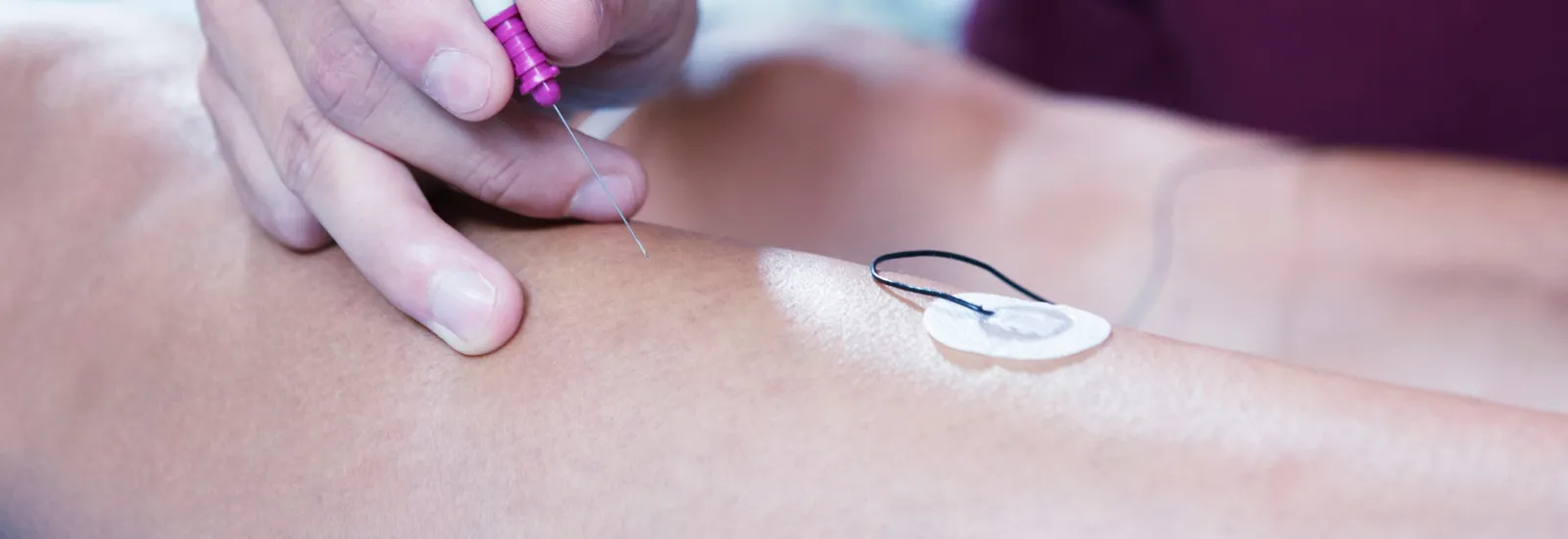
EMG tests: what they are and what they can diagnose
3-minute
read
If you experience numbness or tingling in your
body, something in your nervous system could be amiss. Electromyography, also
called an EMG, is a diagnostic test used to detect nerve disorders, nerve
damage, and muscle disorders related to the nervous system.
Nerve and muscle disorders an EMG can diagnose
Electrodiagnostic
testing examines the muscles and nerves to detect
conditions related to:
- Amyotrophic lateral sclerosis, or ALS, and other motor neuron diseases
- Carpal tunnel syndrome, or nerve compression in the wrist, and other
conditions that affect one nerve
- Damage to nerves caused by diabetes, also called diabetic neuropathy
- Herniated disc
- Muscular dystrophy, a group of diseases that cause muscle weakness and muscle loss
- Myasthenia gravis, a disease that causes weakness of muscles
- Myopathies, conditions that cause symptoms such as muscle weakness, cramps, and spasms
- Radiculopathy, or pinched nerves
How an EMG test works
An EMG test is usually paired with a nerve
conduction study (NCS), another common neurological test used to stimulate
nerve cells and diagnose or rule out certain conditions. EMG tests determine if
muscles respond the right way to nerve signals by recording the electrical
activity in a muscle. An NCS helps
diagnose nerve disease or nerve damage by measuring the nerve's ability to send
a signal, as well as the speed and size of the signal.
Motor neurons control activities such as
walking, breathing, speaking, and swallowing. Muscles can develop abnormal
signals if they become damaged. When combined, an EMG test and NCS provide a
better picture of certain muscle and nerve responses to stimulation.
Typically, a neurologist
or neurological technician will administer an EMG and NCS.
What to expect during the tests
You can receive an EMG and NCS at an outpatient
clinic or hospital. They may take 30 minutes or longer depending on the extent
of testing needed and how many areas are being tested. Before your exam, talk
with your healthcare provider about medications you take. An EMG presents a
slight risk of bruising and bleeding.
During an EMG, you will lie or sit on a table.
The provider will insert a very thin needle electrode into the muscle they need
to examine. The electrodes create very small punctures. There's usually no
bleeding, but you may experience muscle soreness where the needles were
inserted.
Wires on the other end of the electrode connect
to the EMG machine, which sends a mild electrical shock to your muscle. As you
flex or tighten the muscle, activity is recorded on a screen and sometimes
transmitted through a speaker, and you'll hear scratchy or popping sounds as
the muscle contracts.
During an NCS, the specialist uses electrodes to
deliver a mild pulse to specific nerves and records how long it takes for the
electrical impulses to travel to different areas of the body. These tests may
cause a mild, tingling feeling.
Managing discomfort during an EMG
Some people find the insertion of the needle or
probe uncomfortable, similar to receiving a shot or giving blood. If you feel
stressed or anxious about having an EMG or NCS, talk with the neurologist or
technician performing the tests. They will talk you through the procedure and
needle insertions, as well as tell you which muscles to relax or contract.
These tests provide vital information to healthcare providers so they can understand the source of muscle weakness, pain, tingling, or numbness. If you or a loved one experiences any of these symptoms, talk with a primary care provider to determine if one of these neurological tests can help identify and treat the problem.
Visit Reid Neurology Associates or call (765) 939-7711 to find a neurologist you can trust.

